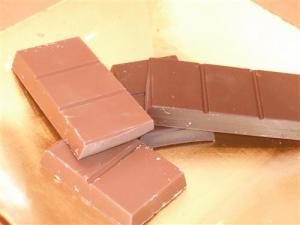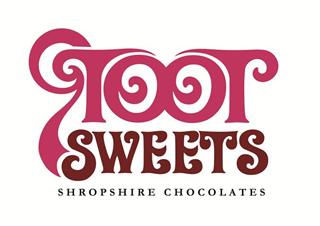How to taste Chocolate
 You may have heard chefs or read reviews which use the following terms snap, aroma, mouth feel.
You may have heard chefs or read reviews which use the following terms snap, aroma, mouth feel.
Unless you’ve taken the time to really research chocolate and how it should be tasted all these terms can be quite mind boggling, so here’s my tips on how to taste chocolate.
When tasting chocolate I find it’s best to choose plain bars rather than truffles, bonbons or bars which have been flavoured with anything. You don’t want anything to get in the way of the actual flavour of the chocolate. Chocolate like wine and coffee has its own distinct flavour, especially when trying Single Origin or Bean to bar chocolate.
Here’s our step by step guide to tasting chocolate:
Before you start make sure all your bars are at room temperature as chocolate which is very cold or even refrigerated will hide certain flavours. Also don’t be afraid to take a large piece of chocolate to try, you’re not going to be able to pick up all the different notes within the chocolate flavour with a tiny piece of chocolate. Eat a piece of apple before you move on to the next sample of chocolate to clear your palette.
Appearance:
We taste with our eyes as much as our mouths. The chocolate should have a good texture, not too soft or brittle, a shiny gloss with no bloom. Blooming is an indication of poor quality storage conditions (temperature) causing the sugar or fat to separate or poor quality tempering.
The colour of the chocolate is not an indication of quality of Cacao content. The environment the Cacao beans have been grown in as well as how they have been roasted will also have an effect on the overall colour. Cacao content doesn’t always symbolise good quality you may find a bar of high percentage cacao will have been produced with a poor quality cacao.
Snap:
The “snap” should be a clear crisp sound which is produced when breaking a piece of chocolate. The crack or snap can be felt and heard when biting into the chocolate. A clean snapping sound demonstrates how well tempered the chocolate is, also the higher the cacao content the harder the chocolate will be to break and the louder the snap. Milk and White chocolate has lower cacao content so the snapping sound will be less pronounced and softer compared to dark chocolate.
Aroma:
As I have said previously chocolate takes on different flavours because of its environment, so just like Wine and Coffee chocolate from one country or plantation will have a totally different flavour and smell to another countries chocolate.
Single Origin Chocolate will have a more developed aroma compared to standard chocolate which has been made using various beans.
An experienced taster over time will also be able to learn the different aromas produced from different roasting techniques.
Here are some general descriptions to look out for when smelling the chocolate:
- Fruity/ Citrus
- Grassy/Green/Herbal
- Floral
- Nutty
- Spicy
- Woody
- Caramel
- Chemical
- Sweet/Sugary
There are lots of different ways of describing aromas which is part of the fun of tasting!
Mouthful:
This is literally how the chocolate feels in your mouth, the texture and any other sensations you might feel. A high quality chocolate will melt in your mouth without you having to chew.
Texture- is it smooth, grainy, gritty, velvety, creamy, waxy or greasy?
N.B. A waxy texture is usually a tell- tell sign that vegetable fat has been used instead of Cocoa Butter.
Taste- the best bit:
Hopefully if you’ve followed the above instructions when you actually get to taste the chocolate you will appreciate how much more you notice about the overall flavour.
Firstly beware that what you smell doesn’t always mean you will taste the same flavour, and what you taste may not feature in the aroma.
A good quality chocolate will have a series of flavours so take time to let the chocolate melt and taste the different stages of flavour. The after taste will certainly be different to the initial taste, also like wine tasting the after taste maybe short or long and linger.
As with all tastings the more varieties you try the better as over time you will pick up differences and recognise aromas, tastes and appearances more easily…..so the more homework the better! Make sure you have a clean palette before you try new chocolates. Everyone’s palettes are different, so tasting in groups will make the experience more enjoyable and interesting.
Start with the lowest Cacao content and slowly work your way up to the higher percentages. Starting with the lowest will allow you to pick up the difference in tastes/percentages of cacao in the each sample of chocolate.
Like all expert tastings you won’t suddenly pick everything up, but with practice and experience you will. The most important thing is to have fun.
In the coming months we will be launching a special range of Single Origin bars perfect for tasting.
Tags: Cacao, Chocolate, Chocolate Bars, Dark Chocolate, Eating Chocolate, Handmade Chocolate, Handmade Chocolate Truffles, Milk Chocolate, Single Origin, Tasting Chocolate, Tasting Notes
